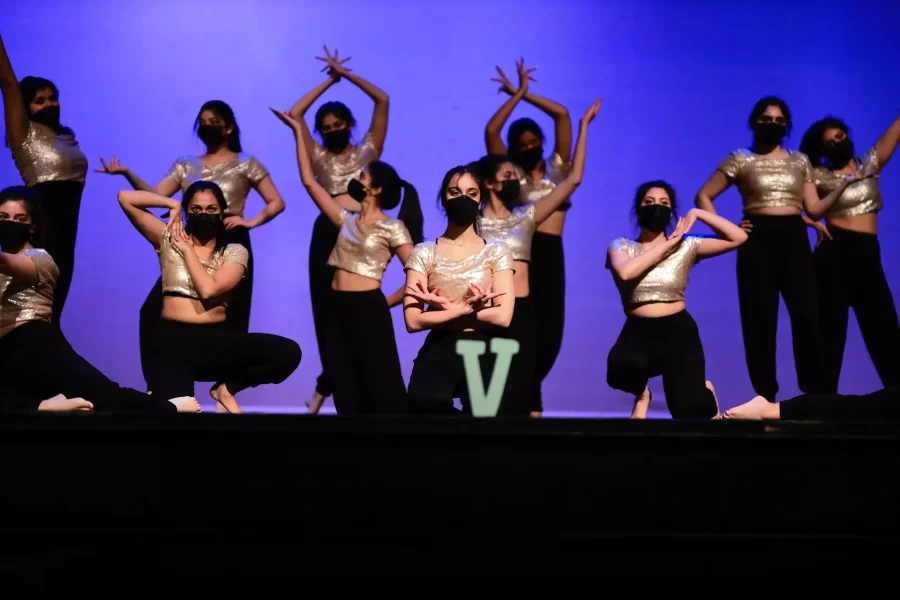Bollywood-fusion dance team Northwestern Deeva enhances cultural connectivity
Northwestern Deeva incorporates a variety of dance styles including Bollywood, hip-hop, jazz and kathak.
January 12, 2023
Weinberg junior and Northwestern Deeva co-captain Rhea Sharma knew that when she came to NU, she wanted to keep dancing in college. When looking for a group to join, Deeva stood out as a competition team with roots in Indian dance that promoted the cultural dialogue she was looking for.
Deeva aims to create an inclusive space on campus for people of different dance backgrounds. While Deeva is a Bollywood-focused team, Bollywood itself is rooted in the collaboration of traditional South Asian and Western dances, Weinberg sophomore and co-PR Chair Sajel Peters said. It also incorporates styles such as kathak ― an intricate form of Indian classical dance that emphasizes footwork, contemporary, hip-hop and jazz.
“Our mission is to foster a cultural exchange and interconnectedness through dance and sharing different forms of dance,” Sharma said.
As a competitive team, Deeva submits a video to competitions across universities with pieces that showcase its strengths. Dancers must learn these pieces quickly — they learn dances from late September to early October. Deeva was unable to attend competitions since 2020 due to the COVID-19 pandemic but is currently preparing for competitions again.
Peters said while the team has a core focus on South Asian styles, Deeva also incorporates other genres, depending on team members and their experience.
“Because it is a fusion team that has a focus on a non-Western-specific style, it’s an incredibly diverse team,” Peters said. “We have a lot of international students, a lot of students who even knew nothing about Bollywood beforehand.”
This year’s competition set included Bollywood-influenced pieces, a kathak dance featuring a song mixing classical elements with Ariana Grande’s “7 rings,” a South Indian piece and a hip-hop piece.
In addition to competing, Deeva has performed on campus at the South Asian Students Alliance’s Festival of Lights show this past fall and SASA Show last February.
Deeva also hosts its own annual spring show. Anyone on the team can apply to choreograph for the performance, and dancers can select which pieces they want to perform in.
Peters choreographed a femme hip-hop piece for last year’s spring show to “Water” by Kehlani, which Peters said was well-received by the audience.
Peters enjoys watching femme hip-hop choreography inspiration videos. She dabbled in the style while in high school and saw the potential to bring it to the group.
Weinberg sophomore and tech director Niyati Hansaria said Deeva’s spring show reflects the pieces it performed in competitions and centers around a major theme that influences the dances and music. Last year’s theme was inspired by the Netflix series “Bridgerton.”
While previously popular pieces can be performed again as openers or closers, Hansaria said the spring show features a lot of original choreography. According to Sharma, the captains create a storyboard and choose dance styles that align with different points in the story when planning the spring show. Sharma said she is trained in kathak.
“It has ancient roots and it’s all about storytelling, and these stories are often Indian folk tales or religious tales,” she said. “Not only was I learning how to dance, but I was also learning a lot about my culture.”
When she choreographs dances, Sharma said she chooses a song from sources such as Bollywood movies or her previous kathak training. She envisions what she wants the overall piece to look like and sometimes freestyles in front of a mirror and visualizes different formations. She also “combines heads” with other dancers to collaboratively choreograph.
Hansaria said the team’s engagement with different styles is characterized by experimentation, so team members are able to play around with different genres because of their varying backgrounds. She said the team provides opportunities to exercise creative freedom and is very loving and inclusive.
“We’re a very tight-knit, very small community on campus, so there is a lot of care and compassion and connection,” Hansaria said.
Email: [email protected]
Related Stories:
— Captured: SASA highlights student performance groups with Festival of Lights
— SASA hosts its annual production featuring South Asian performance groups


